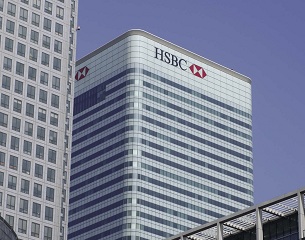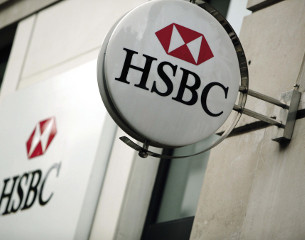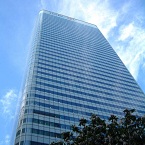HSBC is streamlining its employee benefits offering as part of plans to safeguard its talent during their career with the organisation and through into retirement.
The streamlining project will culminate in the delivery of a new benefits proposition in 2015 that will provide all employees with a suite of competitive benefits regardless of their role or career band.
Maria Strid, head of performance and reward, says: “As with any large organisation comes a degree of complexity, particularly as you grow, both through acquisition and organic growth.
“We want to try to make sure we have an employee benefits proposition that is consistent and equitable, and slightly simpler than what we have today, which would also help and support the new organisational structure and our overall business strategy.”
New business strategy
Stuart Gulliver, who took over as HSBC group chief executive in January 2011, announced in May of that year a new business strategy with which he planned to make savings of up to $3.5 billion (£3 billion) within three years, to boost shareholder returns.

An investor update announced in May of this year reveals that the bank, which reported a pre-tax profit of $8.4 billion (£7.3 billion) for the first quarter of 2013, almost double the $4.3 billion (£3.7 billion) it reported a year earlier, is committed to growing its business and dividends, as well as streamlining its processes and procedures, during the next phase of its strategy between 2014 and 2016.
In preparation for streamlining its employee benefits, HSBC ran a consultation process with employees and staff representative bodies, including its pension trustees, from January to April 2013. “The most high-profile change we proposed was the pension change,” says Strid.
“Our future proposition will be a very competitive defined contribution (DC) pension scheme. We were very clear that this isn’t a cost-cutting exercise at all, and so the premise was also around reinvesting any potential annual savings into the overall proposition, and that’s what we’ve done.”
The new benefits strategy, which will be implemented between January and July 2015, will introduce a trust-based DC scheme with a core employer contribution of 10% on the first £20,000 of salary, and then 9% on the remaining pensionable salary.
HSBC will also offer matching contributions of up to 7% and pay all the annual management charges for the scheme, which has different sections for different groups of employees. The bank plans to close its defined benefit (DB) plan to future accrual.
Employee feedback
HSBC prides itself in its employee feedback efforts, and the benefits consultation process was no exception, says Strid. “The exercise we just went through is probably the greatest feedback we’ve ever had.
“We have genuinely listened and that’s what has shaped the new proposition.”
She adds: “Pensions is a complex process. What did come through was that our employees wanted to understand it better and get some help with understanding it, so one of the things we’ve committed to is a long-term financial education programme. We will be launching that in the fourth quarter this year.”
HSBC recognises the power of a competitive pension scheme in attracting top talent to the business. Strid says: “[The pension scheme] is a key benefit, but also it is a financial product. Taking the time, through both financial education and providing a pension benefit that is very competitive and good for our employees, is key.”
The bank will also introduce private medical insurance for all its employees and their families as a core benefit, as well as income protection at 60% of salary, which is double the current level.
Flex upgrade
In line with its aim to offer employee benefits that appeal to all staff, HSBC has also upgraded its flexible benefits platform to a new system offered by Aon Hewitt.

The bank has also introduced single sign-on. “One of the things to make things easier for our employees as they go through the annual [flexible benefits] elections, or things they can change every month, is single sign-on,” says Strid.
“As long as they’re logged into the network at their desk, they can go straight in without any additional sign-on. That’s one of the things that makes the administration more user-friendly.”
HSBC uses multiple channels for communicating benefits to staff. In addition to home mailings and its intranet site, it stages benefits roadshows each year and uses 600 employee benefits champions to promote the perks on offer.
The champions are also responsible for answering colleagues’ questions ahead of the flex enrolment window.
The bank also uses the screen savers on employees’ computers to remind them that the flex enrolment period is coming. “That is something that we see,” says Strid. “Most people go into the system and make some active choices. About 70% [of staff] log in and do that.”
Fit for purpose
Strid says the change programme reflects one of the biggest business issues facing HSBC: “We inherited a number of things through acquisition, so that would have changed the current landscape as to how things look today,” she says. “But moving forward, we want to make sure [the programme] is fit for the future and fit for the organisation.”
But Strid is aware of the limitations of a benefits package in helping the business to retain talent, however robust it is. “It’s about creating the right culture, which means that we have an organisation that people want to join and then stay,” she says.
“It’s an easy thing sometimes for organisations to over-emphasise the rewards and benefits piece. It’s almost like a hygiene factor: if you get it wrong, you will have a problem, but it certainly isn’t the key thing that we would look to for people to join or stay.”

HSBC at a glance
HSBC opened its first branch in Hong Kong in 1865. The global bank is named after its founder, the Hong Kong Shanghai Banking Corporation.
In 1992, the UK’s Midland Bank became a wholly-owned member of the HSBC group, and in 1999 it was rebranded as HSBC.
The business employs 260,000 people worldwide, with 47,300 based in the UK, and has 6,600 offices around the world, in both established and emerging markets. Its network covers more than 80 countries and territories in Europe, Asia Pacific, the Middle East, Africa, North America and Latin America.
It serves about 58 million customers through four global businesses: retail banking and wealth management; commercial banking; global banking and markets; and global private banking.
HSBC’s global head office is in Canary Wharf, London.
Key business challenges
- Capturing the growing international financial flows between its commercial and corporate clients as they grow from small enterprises to large international corporate organisations.
- Using its position in faster-growing markets to capture social mobility and wealth creation through its wealth management and private banking businesses.

Career history: Maria Strid
Maria Strid, head of performance and reward, has been at HSBC for two and a half years. She joined from Santander UK, where she was head of reward and international mobility, having been at that organisation for six years. She started her reward career at a design engineering consultancy Ove Arup and Partners.
Strid says one of her biggest career achievements has been her role in changing the status quo. “That could be from big things to small things,” she says. “It was quite an unusual period at Santander, [for example], because that was during the financial crisis, so being part of a mergers and acquistions team, and then the integration and implementation that came with that, was something quite special.”
Strid is therefore well-positioned to manage the changes at HSBC. “We are essentially reshaping the benefits agenda,” she says, “making sure that it’s aligned to a new organisational structure, and helping the business to operate more efficiently from an employee point of view.
“I would also say that seeing team members, my direct team, develop and flourish is something I take great joy in. Sometimes that means they move on and do other things, but seeing somebody develop and successfully go through their reward career is something quite special.”

Case study:
Hasintha Gunawickrema
Hasintha Gunawickrema, senior business performance manager, European retail banking and wealth management, has worked at HSBC for seven years.
As a working parent with a young family, Gunawickrema values holiday days and the flexibility she has to buy or sell holiday, depending on what her plans are for a particular year. This gives her flexibility around managing family commitments.
She also values the bank’s private healthcare benefit. “It gives me so much comfort on how we can manage unforeseen health issues,” she says. “Last summer, I had to see an ENT [ear, nose and throat] consultant urgently, when the NHS could only accommodate me after seven days.
“I was able to see an ENT consultant in less than a day using the HSBC healthcare cover. Having such amazing support from my employer makes me feel valued.”
The benefits
Pension
A new, trust-based defined contribution arrangement. From 1 July 2015, HSBC will increase its core employer contribution from 8% to 10% for the first £20,000 of employees’ pensionable salary and to 9% for any remaining pensionable salary above £20,000. It will also match any employee contributions of up to 7%.
Private medical insurance (PMI)
From January 2015, all employees will be eligible for company-paid private medical insurance for themselves and their family.
Income protection
From January 2015, all employees will be eligible for company-funded income protection of 60% of salary.
Holidays
As of 2015, annual holiday entitlements will range from 25-30 days (plus public holidays), depending on global career band.
Days can be bought and sold up to a maximum of five days.
Maternity leave
As of 2015, HSBC will provide 19 weeks’ paid maternity leave.
sildenafil citrate breathing
Bonuses xanax bars effects erowid – xanax effects high blood pressure
?????? ??? ????? ???? ?????? ??? ?????? ?????? ???? ?????? ??????
For those who’re thinking about moving, may be the best time to complete the task. May possibly sound hard to believe, but true. Show him house he is actually living inside.
???? ??????
?? ??????
?????? ??????
????? ??????
?????? ????
By getting a truck, you are earning sure your things are handled inside of best possible manner. For long journeys, planning to useful car well-ventilated.
foto caja sildenafil citrate
konvpvsr.ganwwlo, ??????? ???? ??????, UuxSTEG, http://www.youtube.com/watch?v=tfstwB2CioU – ??????? ???? 800 ??????, pemejFscqV, http://www.youtube.com/watch?v=tfstwB2CioU ???? ??? ????????? ??????, PsulHxQ.
HSBC is withdrawing its beneficial staff loan and overdraft facilities. The current staff overdraft rate of 1% over base rate is being replaced with a commercial rate of 11.9%.
This will penalise staff who have a current overdraft.
Your views please.
Fast Money Loans
Our quick cash loans are available to those that need money fast. We have short-term style loans, all the way up through installment loans, and many in the middle. We can help take away the stress and helpless feelings that often accompany not being able to pay your bills. Overdraft fees, and mounting late fees, can quickly overtake your finances and ruin your ability to make ends meet. That’s what short-term style loans are for. Most of the time, you’ll get your response from your application in seconds or minutes, and then can get the money you need put into your account the following business day. Contact us today via email;[email protected] for more information about our loan programming and regulation.
Thanks,
Mr Crystal Clark
I believe everybody went like Ones New website, reason being things like this site without doubt has a article on quality. I loved read A New content. go on To remain a useful article, I will avail Once more by One additional time. Bless you.
Hi, I d believe this is n exllent blog. stumbledupon it I am going to retun yet again sine I book-marked it.Mony an freedom is the bet way to change,may you b ich and continue to guide othr ople.
Every once inside a while we select blogs that we study. Listed beneath are the latest websites that we pick